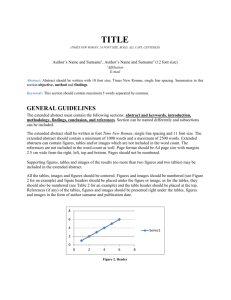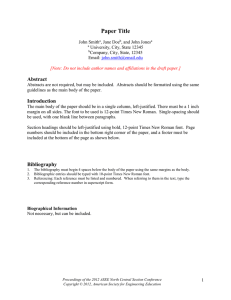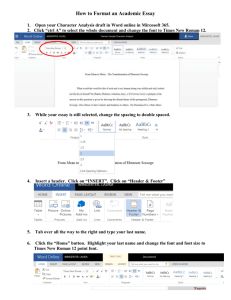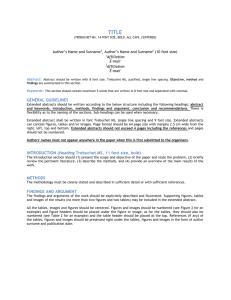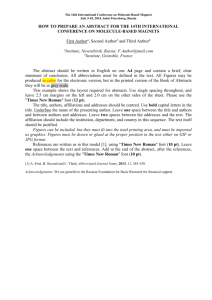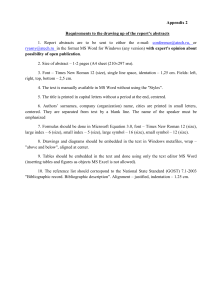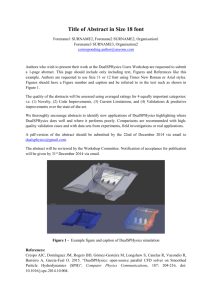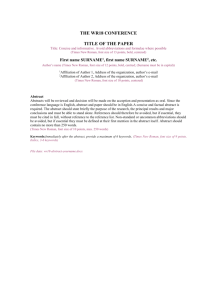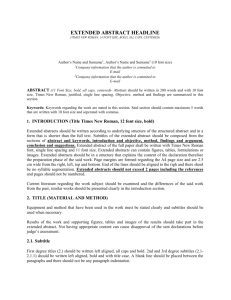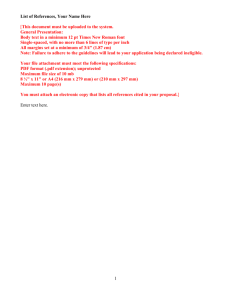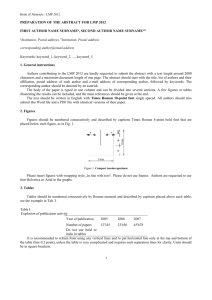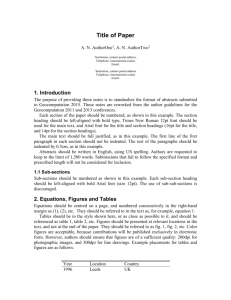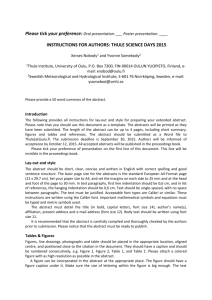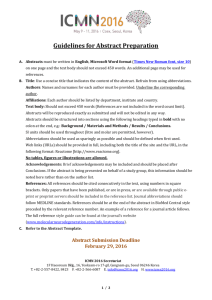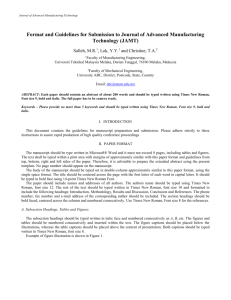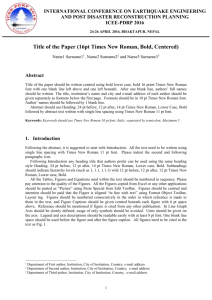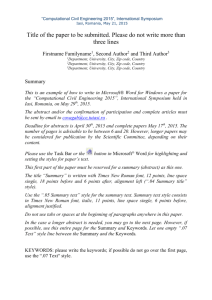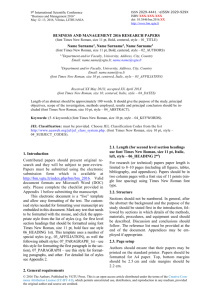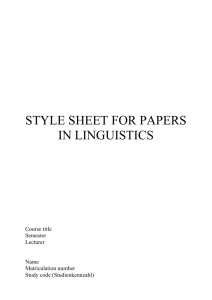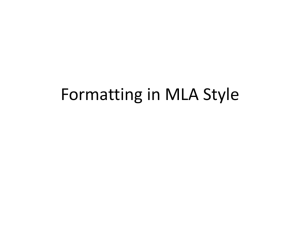the abstract template
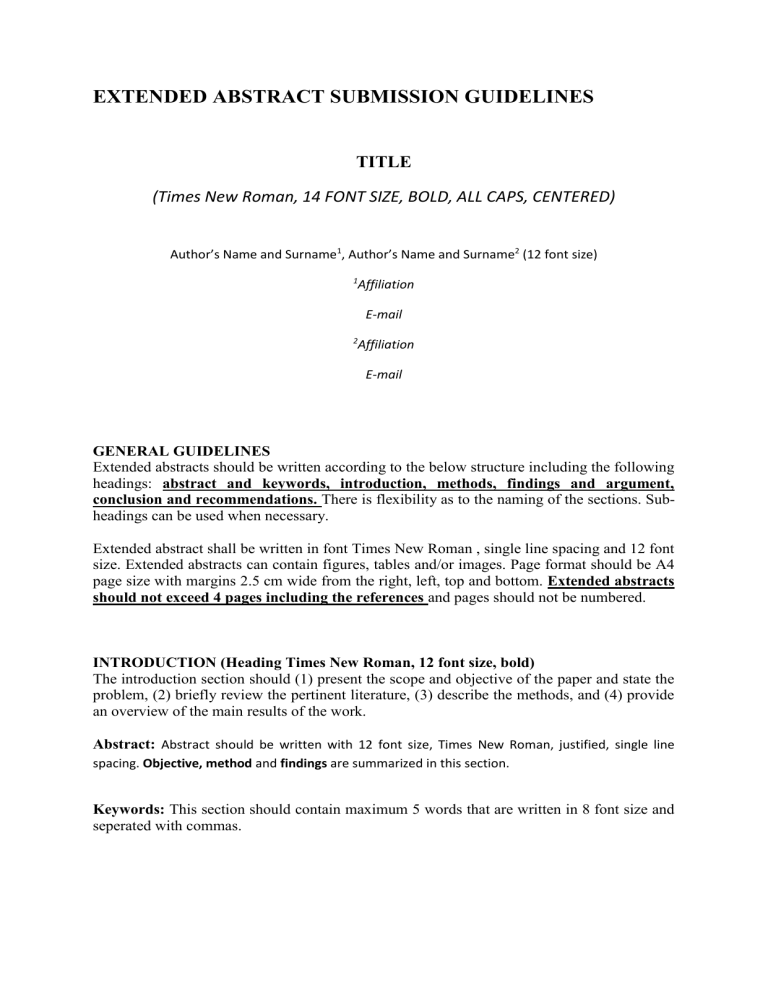
EXTENDED ABSTRACT SUBMISSION GUIDELINES
TITLE
(Times New Roman, 14 FONT SIZE, BOLD, ALL CAPS, CENTERED)
Author’s Name and Surname 1 , Author’s Name and Surname 2 (12 font size)
1 Affiliation
2 Affiliation
GENERAL GUIDELINES
Extended abstracts should be written according to the below structure including the following headings: abstract and keywords, introduction, methods, findings and argument, conclusion and recommendations. There is flexibility as to the naming of the sections. Subheadings can be used when necessary.
Extended abstract shall be written in font Times New Roman , single line spacing and 12 font size. Extended abstracts can contain figures, tables and/or images. Page format should be A4 page size with margins 2.5 cm wide from the right, left, top and bottom. Extended abstracts should not exceed 4 pages including the references and pages should not be numbered.
INTRODUCTION (Heading Times New Roman, 12 font size, bold)
The introduction section should (1) present the scope and objective of the paper and state the problem, (2) briefly review the pertinent literature, (3) describe the methods, and (4) provide an overview of the main results of the work.
Abstract: Abstract should be written with 12 font size, Times New Roman, justified, single line spacing. Objective, method and findings are summarized in this section.
Keywords: This section should contain maximum 5 words that are written in 8 font size and seperated with commas.
METHODS
The methodology must be clearly stated and described in sufficient detail or with sufficient references.
FINDINGS AND ARGUMENT
The findings and arguments of the work should be explicitely described and illustrated.
Supporting figures, tables and images of the results (no more than two figures and two tables) may be included in the extended abstract.
All the tables, images and figures should be centered. Figures and images should be numbered (see Figure 2 for an example) and figure headers should be placed under the figure or image; as for the tables, they should also be numbered (see Table 2 for an example) and the table header should be placed at the top. References (if any) of the tables, figures and images should be presented right under the tables, figures and images in the form of author surname and publication date.
8
6
4
Ряд1
2
0
0 2 4 6 8
Figure 2. Header
Table 2. Header
Reference: author surname and publication date
CONCLUSIONS
Conclusions should include (1) the principles and generalizations inferred from the results,
(2) any exceptions to, or problems with these principles and generalizations, (3) theoretical and/or practical implications of the work, and (5) conclusions drawn and recommendations
References: Authors are responsible for ensuring that the information in each reference is complete and accurate. All references should be cited at the end of the text. Reference pages are additional to the 4/5 ‐ page paper count.
The Harvard (name and date) system should be used: either "recent work (Smith 2007) or
"recently, Smith (2007) has stated …”.
All such references should then be listed in alphabetical order according to the following conventions:
1.
Books – e.g.: Lee, K and Carter, S (2005) Global Marketing Management – Changes,
Challenges and New Strategies, Oxford University Press.
2.
Journal articles – e.g.: Lodorfos, G N and Dennis, J (2008), "Consumers’ intent: in the organic food market", Journal of Food Products Marketing, 14 (2), 17 ‐ 38.
3.
Contributions in books, proceedings etc – e.g.: Dennis, J (2003), "The nature of supplier/client relations in the legal industry", BAM Conference proceedings,
September
2003, Harrogate.
4.
Websites / online resources – e.g.: MARKETING COVENTRY (2009), "Research" available at:cvone@coventry.org.uk[Date accessed: 04.12.08]
Preparation of Figures: Each figure should be embedded in the electronic manuscript file.
All figures should be cited in the manuscript in a consecutive order. Each figure is subject to resizing to fit into the column’s width of or the full text width for consistency and clarity.
Preparation of Tables: Tables should be cited consecutively in the text. Every table must have a descriptive title and if numerical measurements are given, the units should be included in the column heading. Vertical rules should not be used.
The use of general descriptive names, trade names, trademarks, and so forth in this publication, even if not specifically identified, does not imply that these names are not protected by the relevant laws and regulations. While the advice and information in this conference are believed to be true and accurate on the date of its going to press, neither the authors nor the organizer can accept any legal responsibility for any errors or omissions that may be made.
